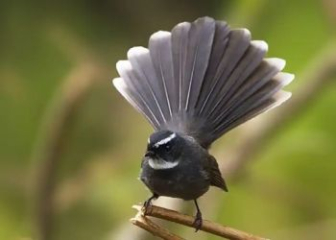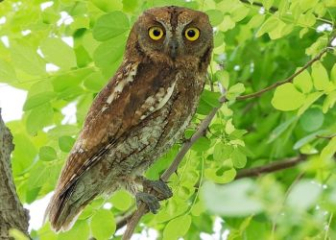What is a Green Starling? Characteristics, habits and how to raise it from AZ
Blog | by
The Green Starling (European Starling - Sturnus vulgaris), a bird with a unique metallic black color, capable of changing color with the seasons, always lives in large flocks.
The Green Starling , also known as the European Starling (scientific name is Sturnus vulgaris). They are considered a precious “black pearl” in the bird village because of their unique shiny black, metallic feathers. In addition, this bird is also very intelligent, has a unique singing voice and interesting migratory habits.
However, because of its good adaptability and rapid growth, the green starling is considered an invasive species in some countries such as Australia, the US, and New Zealand.
If you want to learn more about the Green Starling (European Starling), please refer to the article below by nicebirds !
Information about Green Starling :
|
Scientific name |
Sturnus vulgaris |
|
Common name |
European starling, green starling |
|
English name |
European Starling |
|
Set |
Passeriformes (Order Passeriformes) |
|
Surname |
Sturnidae (Starling Family) |
|
Source |
Europe, West Asia, North Africa |
|
Size |
19 - 22 cm 60 - 100g |
|
Lifespan |
3 - 15 years, depending on living conditions |
Origin of Green Starling (European Starling)
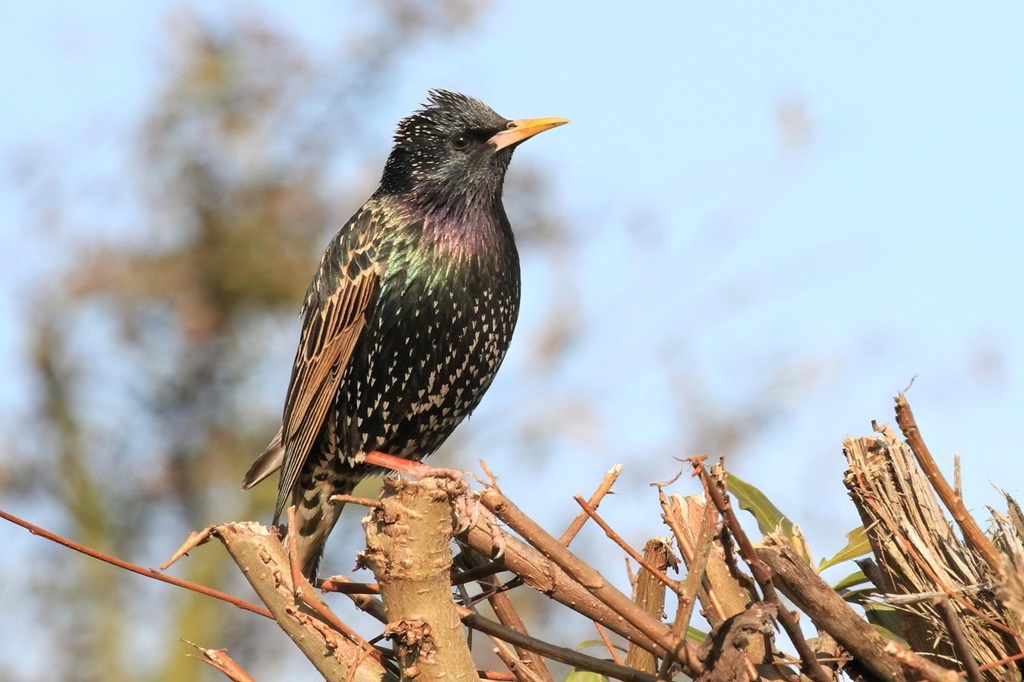
Green starling is also known as European starling.
The green starling, also known as the European starling, scientific name Sturnus vulgaris, is a bird native to Europe, Western Asia and North Africa.
By the early 19th century, this starling species was introduced to North America and then to Australia, New Zealand, South Africa and many other countries around the world.
Thanks to its beautiful voice, beautiful appearance and high adaptability, the green starling has become a favorite pet bird. However, because it grows too quickly and affects some other native species, it is considered an invasive species in some countries such as the US and Canada.
The green starling was also a favorite bird of the great composer Shakespeare, who even mentioned them in his works.
Appearance of Green Starling (European Starling)
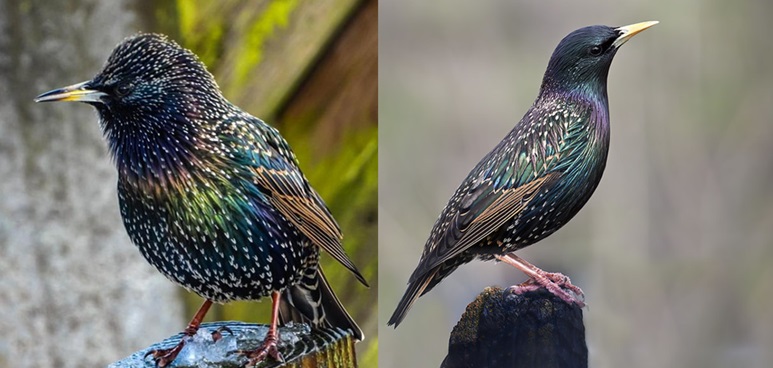
The distinctive appearance of the Green Starling in winter and breeding season.
The eye-catching appearance of a green starling in winter.
The European Starling (European Starling) is a bird with a very special appearance, standing out with its metallic blue feathers and the ability to change color with the seasons. Let's learn more about the appearance of this European starling!
Size & appearance :
- Length : 19 - 22 cm
- Wingspan : 31 - 40 cm
- Weight : 60 - 100g.
- Posture: straight, steady, flexible movement.
Coat color :
- Main coat color : Metallic black, when viewed under light, it has a very clear blue, purple or green color.
- White spots : In winter, when the weather turns cold, small, sparkling white spots appear all over the bird's body.
- Neck and head : Metallic purple-blue color, glossy.
- Branches and tail : Black border, clear light brown border, slightly metallic,
- During breeding season : there are fewer spots on the feathers, the feather color is shinier, the metallic sheen is clearer and darker.
Other parts :
- Beak : Bright yellow in breeding season, dark black in winter.
- Eyes : Dark brown, round.
- Legs : Light pink or slightly red.
- Head : Round. Short neck.
Habits of the Green Starling (European Starling)

Green starlings migrate in large flocks creating unique shapes.
The green starling is considered an extremely intelligent, flexible and highly adaptable bird. Let's learn in detail about the outstanding habits and behaviors of this starling species!
Smart and active
The green starling has the following outstanding characteristics:
- Very intelligent : They learn very quickly, imitating both human and machine sounds.
- Hyperactive : Always moving, rarely standing still in one place for long.
- Curious : Green starlings are also extremely curious by nature, they will always check and explore their surroundings.
- Living in large flocks : This bird species loves to live in large flocks, especially when it is not breeding season.
Use chirping to communicate
The Green Starling has many different types of songs such as screeching, chirping, and whistling. In the wild, the male will often use his song to attract mates and mark his territory.
In addition, they can also imitate the sounds of many different birds, car horns, telephones, human voices, etc.
Always nest in tree holes
Green starlings often use tree holes, wall holes, roofs or chimneys to make nests. Nesting materials used by this bird are also very flexible, such as dry grass, leaves, rags, scraps of paper, pieces of plastic, etc.
Some individuals even like to occupy the nests of other birds as their own breeding grounds.
Is an omnivorous bird
European starlings are omnivorous, eating insects, fruits, grubs, seeds and even food scraps.
As a migratory bird, it likes to gather.
The green starling is a migratory bird in temperate regions. When the cold winter comes, they will migrate south to avoid the cold.
And outside of the breeding season, they always gather in very large flocks, which can number up to thousands. When flying, they create a beautiful natural phenomenon called “Murmuration - flocks of starlings flying in giant spirals”/
Reproductive behavior
Here are some characteristics of the reproductive habits of the green starling (European starling):
- Breeding season: Usually from March to July in temperate regions.
- Reproduction is by pairing or polygyny.
- Lays 1 - 2 litters a year, each litter lays 4 - 6 eggs.
- Green starlings typically incubate their eggs for about 12 days.
- After hatching, the baby birds will be cared for by their parents until about 3 weeks, when they can leave the nest to find food for themselves.
Is an invasive species
Green starlings are considered a strong invasive species in some countries such as the US, Australia, and New Zealand because they can compete with native birds for nests, destroy crops, and their rapid growth rate causes ecological imbalance.
Green Starling Breeding Techniques from A to Z
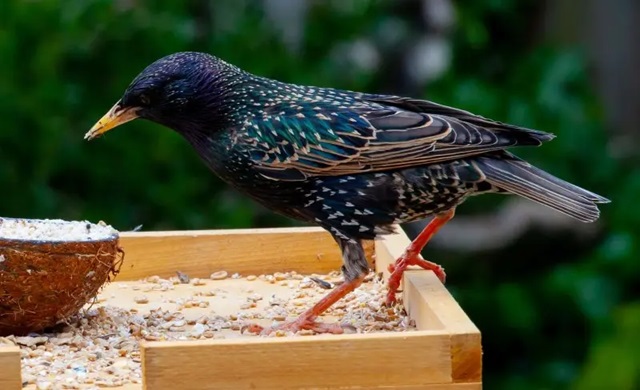
Green starlings are omnivorous.
If you want to tame and take good care of your green starling (European starling), please refer to some basic breeding techniques that we share below for a higher success rate!
Choose green starling breed
First, you need to choose a good breed of green starling so that they can adapt better and grow faster.
A good breeding bird will meet the following criteria:
- Bright eyes, smooth feathers, not ruffled, flexible bird.
- You should buy breeding birds from reputable farms to ensure origin and quality.
- If possible, choose a 3-4 week old bird to make it easier to tame. For an adult bird, you will need more time and patience.
Prepare the cage
A suitable cage and an optimal living environment will help the Green Starling grow best. When preparing the cage, you need to note the following:
- Size : Minimum 60 x 40 x 60 cm, (length x width x height), the wider the better.
- Material : Choose iron or stainless steel cage with moderate bars.
- Cage decoration : The bottom of the cage should be lined with a layer of clean sand or newspaper, and supplemented with many smooth round wooden perches of different heights, water troughs, and food troughs.
- Cage location : Hang the cage in a cool, well-lit place, away from strong winds, rain, harsh sunlight, etc.
What do green starlings eat?
As shared above, green starlings (European starlings) are omnivorous, so when raising this bird in a cage, you can feed them some of the following foods:
Baby birds or newly purchased birds :
- Boiled eggs, crushed
- Deep-fried bran
- caterpillar, small grasshopper.
- Ripe bananas,...
- Clean water Provide enough, every day.
Birds are familiar with :
- Bird food for woodpeckers
- Worms, boiled eggs, should only be eaten 2-3 times/week.
- Add ripe fruit.
- Occasionally feed crickets and grasshoppers to stimulate the hunting ability of this bird species.
- Clean water Provide enough, every day.
Taboo foods :
-
Salty, sweet, greasy foods, onions, garlic, chocolate,...
Sunbathing & Bathing
You should bathe and sunbathe your Green Starling regularly to keep its body clean, feathers smooth and healthy. Specifically as follows:
- Bathing : Let the bird bathe 2-3 times/week, use a shallow water tray for the bird to bathe itself, after bathing, it needs to be exposed to the sun and wind so that the bird can dry its feathers.
- Sunbathing : Every day, you should let the bird sunbathe for 15 - 20 minutes before 9am.
Voice training and taming
If you want your green starling to sing well, you need to spend time taming and training the bird's voice, specifically as follows:
- When you first catch the bird: Hang it in a quiet place, limit loud noises, and avoid contact.
- Familiarization stage: You should practice interacting with the bird, talk gently, practice feeding the bird by hand, and have more contact to help the bird become accustomed to people.
- Practice speaking and imitating: Play a recording of whistling, soft music or human voices for the bird to listen to regularly every day, about 15 - 30 minutes.
- Singing practice: Let the bird listen to the standard blue starling voice so that the bird can learn to imitate it.
Hygiene and disease prevention
To help your green starling (European starling) have good health and live long, you need to pay attention to hygiene and disease prevention for them. Specifically as follows:
- Change the paper lining at the bottom every day, change the sand 3-4 times a week. Remove leftover food and change the water.
- Supplement vitamins and digestive enzymes for birds
- Deworm every 3 - 6 months, use specialized medicine for small birds in drinking water or food.
- Monitor your bird's daily behavior, from eating, activity to droppings. If you see any unusual signs such as ruffled feathers, loss of appetite, diarrhea, or blurred vision, take your bird to the vet for immediate examination!
Green starling price list
If you are interested and want to raise a Green Starling but do not know if this bird is expensive? Which type should you buy, please refer to the price list we have compiled below!
|
Green Starling |
Characteristic |
Reference price (VND/piece) |
Note |
|
Green Starling |
Newly hatched bird, can't eat yet |
200,000 - 350,000 |
High risk, need experienced breeder |
|
Blue Starling |
Birds are not domesticated and do not know how to eat bran. |
350,000 - 500,000 |
It takes time to tame a bird. |
|
Pure green starling, sings well |
The bird is tame, tame, and sings well. |
1,000,000 - 4,000,000 |
Price depends on appearance and singing level of the bird. |
Where to buy reputable green starlings:
- Cho Tot : Many news about selling Green Starlings with prices ranging from only 99,000 - 700,000 VND/bird.
- Reputable bird shops : Refer to shops in Ho Chi Minh City, Hanoi, Da Nang,...
- Facebook Group : A place to buy, sell, and exchange experiences.
Questions and answers about Green Starling
Can the blue starling speak human language?
Yes but very limited, they can only say a few words if trained from a young age.
How long do green starlings live?
In the natural environment, the average lifespan of a green starling is 3 - 7 years, in a good breeding environment it can be up to 10 - 15 years. The record shows that a green starling has lived for over 20 years.
Is the green starling a migratory bird?
Yes, especially in Europe, they often migrate south when winter comes.
Do you need paperwork to raise green starlings?
No, currently in Vietnam there is no law prohibiting the breeding of Green Starlings, however they are an exotic species so you should not release them into the wild.
Beautiful Green Starling Image
To help you better visualize the beauty of this European Green Starling, we have collected many of the most beautiful and impressive images. Let's explore them now!

The “Murmuration” dance of a flock of giant green starlings.
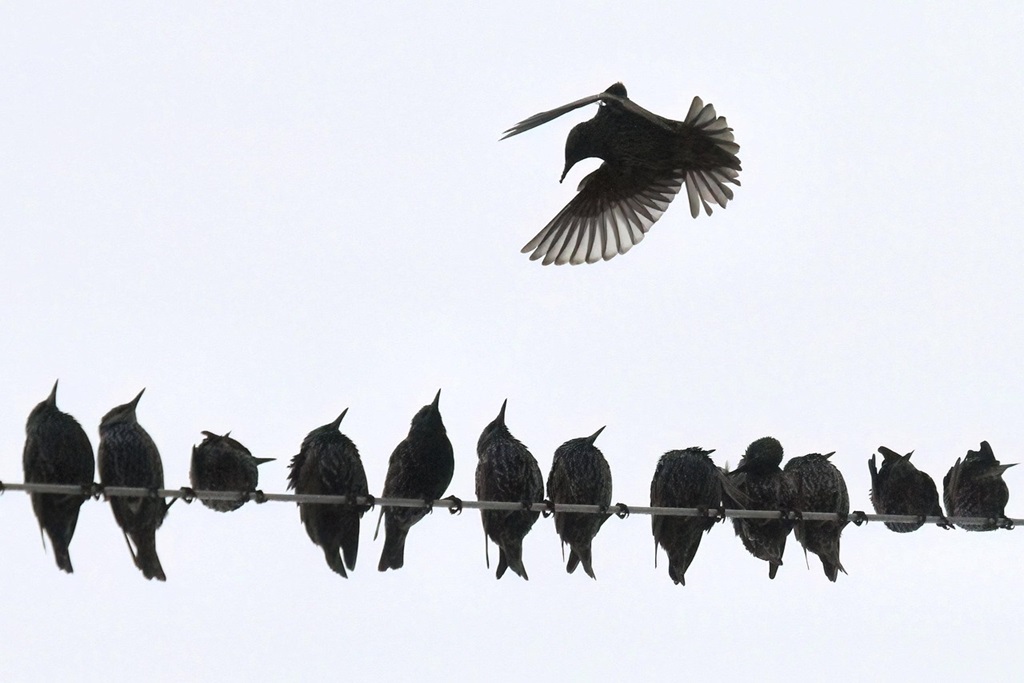
A flock of green starlings is perched on the power lines.
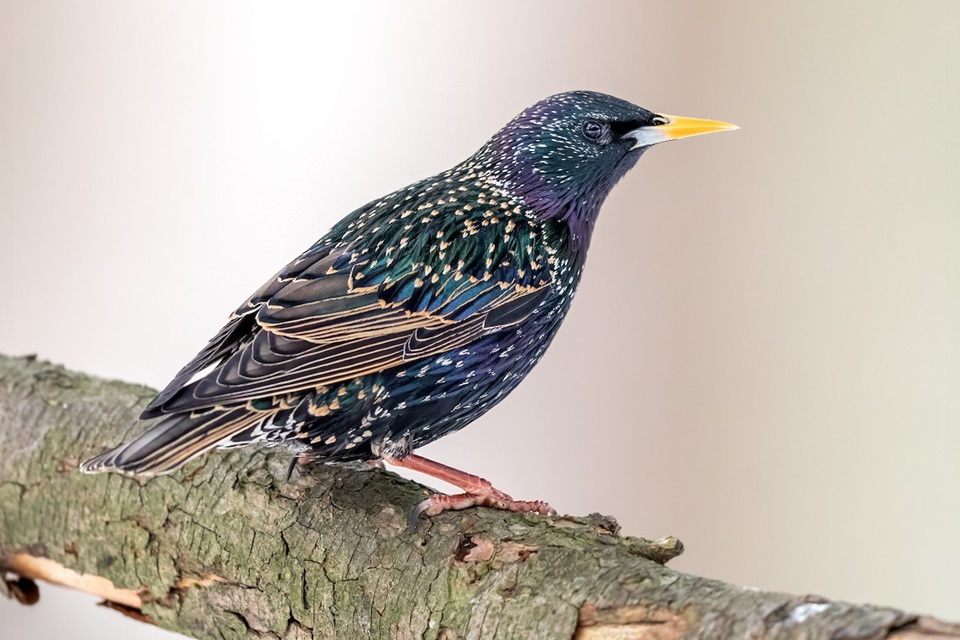
Image of a green starling perched on a tree branch.
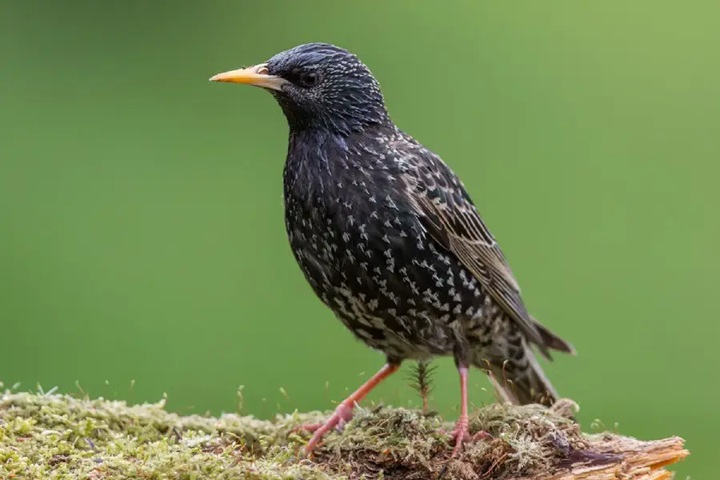
The beautiful appearance of an adult Green Starling.

Image of Green Starling with beautiful spotted plumage.
Thus, above nicebirds.net has shared in detail about the origin, habits and techniques of caring for the Green Starling from A to Z. Hopefully you have understood and have a lot of experience to confidently raise this beautiful, lovely starling.
Although it is not as popular as the brown starling, we believe that with its impressive appearance, unique habits and good adaptability, this bird will become more popular in the future.
Don't forget to visit our Blog section to read more new articles about other beautiful bird species.

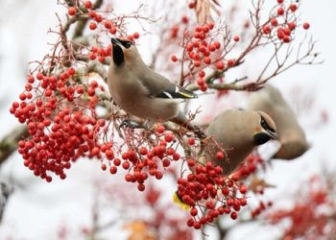

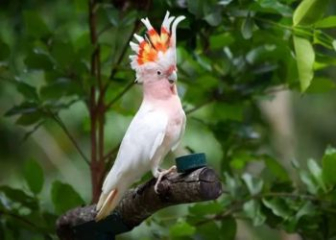
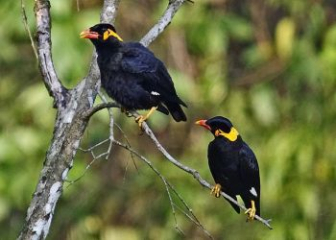
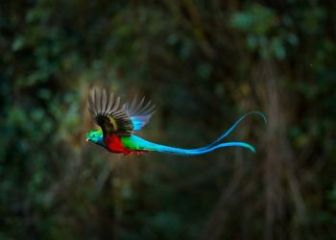





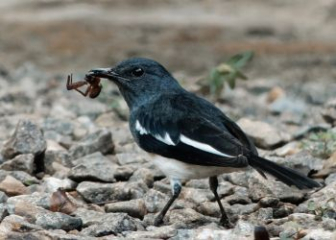
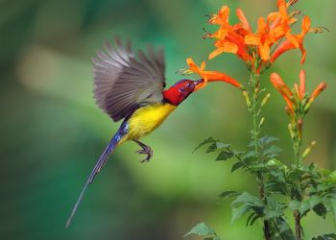


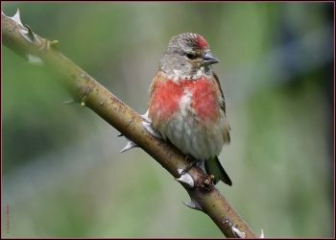
_350x250.jpg)
